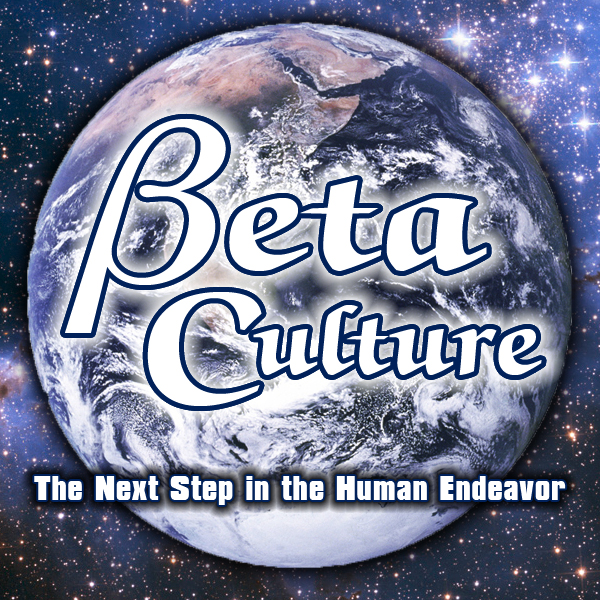 I Carried the Stone the first time when I was 3 years old.
I Carried the Stone the first time when I was 3 years old.
I don’t remember it, of course, but my father was so proud he filmed it and I watched it years later. There I was, all 35 pounds of me, carrying a 10-pound Stone. I managed to carry it almost all the way across our living room before I fell with it and chipped one of my baby teeth. In the movie, my mother picked me up and inspected the broken tooth, glancing angrily at my father, but of course she stayed silent. A chipped tooth is nothing compared to devotion to the Stone. Since I shed the tooth later anyway, it didn’t really matter.
When I was 5 years old I started Catechasm classes and began carrying a Stone in earnest. By the time I was in regular school at 6, I carried the Stone all the time. I could set it down when I was in private by myself, but anytime I was out in public, I carried it.
Like all in my family did. Like all my people did. We’re Lithians, you see, and that’s what we do. We Carry the Stone.
All through elementary school, my Stone sat in the center of my desk as I did my schoolwork, and I showed proper reverence by working and writing on the small corner of my desk the Stone didn’t cover.
By the time I was 15 years old and in middle school, I carried a 45 pound Stone in my arms all day long. My brother at 15 had carried an 80-pounder, and some judged me as less devout, but it was all I could manage for an entire day. Better to carry a lighter Stone than to drop one, or to falter.
I could see the other kids playing sports, riding bikes, or just walking carefree in the hallways, and I envied them. But I never said anything. Eventually I understood: We Lithians are proud of our difference. Carrying the Stone is our strength, and our purity, and all the other children were weak and impure compared to us.
I had a couple of friends for a while who were not Lithians. We all used to walk home along the same streets, and eventually we became friends. Some days we went under the bridge at the river and sat and talked. The two of them would throw flat rocks into the river and sometimes make them skip three or four times, but I had to hold my Stone and couldn’t throw. But one day it started raining heavily just as we reached the bridge, and we ran under it to get out of the rain. We were stuck under the bridge for almost an hour, and in that time, Tom and Freddy skipped rocks and talked about TV shows that I was forbidden to watch because they were blasphemous.
Tom gave me a flat rock. “Just throw one. What can it hurt? I know you have to carry the Stone, but if you sit here with it on your lap, that’s carrying it, isn’t it? Then you can use your right hand to throw the rock.”
I was reluctant, but eventually the two of them talked me into it. I threw the rock and made it skip three times! I tried another and another, but I was never able to get another one to skip. I wanted to, really badly, and both my friends could see it.
“Okay, get up right now,” Freddy commanded. “Give me your Stone and take this rock. Look, it’s just for two minutes, max. I probably can’t carry the thing more than a couple of minutes anyway. Besides, this is what friends are for. They help you out. Tom and I aren’t gonna tell anybody, and nobody else is coming out in this rain. Nobody will know. Just do one or two.”
I felt strange without my Stone. It was scary, but also a little exciting. Freddy stood right next to me, so I could reach over and touch my Stone if I wanted. I held one of the rocks in my right hand, swung my arm and threw it 50 feet! I didn’t even care that it didn’t skip – it was amazing just to be able to throw it like that.
But just as I reached for another rock to throw, my older brother came around the edge of the bridge abutment and saw me standing with a rock in my hands, rather than my Stone. He saw my Stone in Freddy’s arms and stood there with an expression of horror on his face, trembling with the effort of supporting the huge Stone he proudly carried.
When I got home, I was forbidden to talk to Tom and Freddy again, and my brother began driving me to school and back. Worse, during the holiday dinner a few weeks later, my grandmother began crying in front of everyone. Crying about me.
She came around the table and clutched at me around her light Stone, sobbing. “I wanted your Stone to rest with mine someday in the Chasm! My favorite little grandson, what if your Stone is lost to us? My Stone will be without yours for all Eternity!” She broke down into wordless sobs while the entire family stared at me, angry for hurting her this way. I vowed I would never again put down my Stone.
And for three more years, I never did. I discovered a way to sleep sitting up with my Stone in my arms, and despite the fact that I slept badly and it affected my schoolwork, and I sometimes even developed pressure sores on my forearms from my Stone lying on them all night, I almost never did it any other way.
Seeing my devotion, my parents permitted me to go off to college. There are only certain jobs my people can do – my father was a truck driver, for instance, balancing his Stone on the steering wheel of his truck as he drove – but many of us are unable to work out in the world with the non-Lithians, and my family needed the money I could bring in once I graduated.
I went to college to learn accounting. As long as the Stone rests in the center of my desk as I work, and my forearms constantly touch it, I can do my duty to my people and our customs, but also learn a skill to make a good living.
My second year in college I met Anya, from the Lithian colony in the next town. She dressed modestly, as we Lithians do, and carried a Stone almost as big as mine. We started dating. We began going to the local pizza parlor, sharing a pizza across one of the large tables built for serving Lithians. Our Stones rested in front of each of us, with the pizza platter between us, and we ate and talked and laughed.
We both won a place in the collegiate Regional Honors Contest, and were allowed to travel to the big city to compete. We stayed in a hotel, both of us sharing rooms with non-Lithians, a boy and a girl who were also a couple. All four of us were eliminated from the contest on the first day of competition, and Melody and John decided to head to the hotel pool together to swim.
“Why don’t you two come with us?” begged Melody. “Come on. Nobody will know.” She looked at me slyly. “I know you’re not going to tell on Anya, are you, Lamiel?”
I clutched my Stone, embarrassed, and muttered, “Well, no. I’d never tell on her.”
“And Anya, you’re not going to tell on Lammy are you?”
Anya laughed and grinned at me, excited. “No, I’d never tell. Lammy, let’s do it! I’ve always wanted to try it! Let’s go swimming!”
We borrowed suits and towels and trooped down to the pool. Melody and John leaped into the pool with whoops and splashes, but Anya and I just stood there, holding our Stones.
She looked at me and bit her lip, then looked shyly down at her Stone. “I will if you will.”
I walked over to a lounge chair and just looked at it. Then, taking a deep breath, I bent over and sat my Stone on it. Anya gasped when she saw me take my arms away from it. She stared into my eyes in shock, and I had the terrible feeling I was in trouble again, but then she did something exciting and strange. She DROPPED her Stone on an adjacent chair and stepped back from it. She stood rubbing her hands together for a moment with an odd expression on her face, as if she’d never felt them touch together before, and I could see the calluses and scars on her forearms from the years of carrying her Stone.
Then she RAN and jumped into the water. I watched her for a moment, feeling naked and strangely light without my Stone. I couldn’t bring myself to run, but I walked to the edge of the pool. I looked down into it while Anya watched me expectantly. Then I smiled uncertainly at her and slid in.
Melody and John taught us a game called Marco Polo, and we played it for almost two hours, laughing and splashing, swimming and gasping, while our two Stones lay on the lounge chairs, completely forgotten.
When we returned home from the competition, I avoided Anya for days. I was both excited and ashamed by what we’d done. But eventually I began seeing her again, both in class and out of it. We never spoke of the afternoon at the pool, though several times she almost said something to me, and I thought it might be about Marco Polo, and swimming.
I began having dreams of walking on the street in the daylight, of swinging my arms freely, of hurrying, of running, of JUMPING – all without my Stone. I dreamed of playing baseball with the other young men, of batting a ball over the fence and running the bases, then holding my arms over my head with hands clasped together in triumph.
During the day, though, I carried my Stone ever more fiercely, even trading up to a heavier Stone. I began to berate Anya for her lack of devotion, telling her she should get a heavier Stone too. We started arguing all the time, and our relationship deteriorated. One day I told her I was sorry we’d ever gone to the competition, and I wished we’d stayed home instead.
Anya and I broke up, and she began seeing another young man, a non-Lithian. She began sitting as far from me in class as possible, and we stopped talking altogether, acting like each other didn’t exist. I heard things about her and her new boyfriend, about places they’d been seen together, and her occasional lack of a Stone. I refused to listen to such stories, though. She and I might no longer be friends, but I would never believe her a traitor to our People, and our customs.
One day when she came to class, she did not have her Stone. I was dumbfounded and could only stare at her. She caught me looking and glared back, rubbing the calluses on her arms and flipping her hair angrily.
For the remaining months of the school year, I never again saw her with her Stone.
One day I woke up and looked at the Stone in my arms. “Why am I carrying this? I mean, it’s stupid, isn’t it? Nobody else does.” But I was suddenly scared, and clutched my Stone to me. “No,” I whispered fiercely. “This is who I am. I’m a Lithian and we Carry the Stone.”
I met another girl, a gum-chewing non-Lithian named Lilith who worked at the pizza parlor, which I now went to alone. She served me a pizza one day when there was nobody else in the place, and when I asked for the Parmesan shaker, she came from behind me, pressing her chest familiarly into my shoulder as she placed the shaker on the table next to my Stone. She snapped her gum and winked at me when I looked up at her, and then lowered her eyelids. “You know, you should totally go out with me. I really like Stoner boys. Besides, my name’s Lilith, and that’s practically Lithian with the letters rearranged.”
We started dating. Soon we were making love every night in her apartment, with my Stone resting on her abdomen or chest. I caressed her body intimately around my Stone, and was both excited and disturbed by the feel of the Stone as we made love. I loved the way her breasts looked when they were free and natural, and I came to hate the way the Stone pressed them flat.
One night a few weeks into our relationship, I suddenly put my Stone to the side. She raised up on her elbows, concerned. “What are you doing?”
“I … I want to see you, touch you,” I answered. “Without my … without that stone in the way.” I paused for a moment in surprise as the phrase “that stone” echoed in my head. I’d never referred to it in any way but MY Stone, and suddenly I’d called it THAT stone, as if it wasn’t an intimate part of me.
But I did it more and more often after that, leaving the Stone on the side of the bed. One night near the end of the school year, I put the Stone back on her chest, and it looked strange and ugly there. I took it off and put it on the nightstand.
Lilith looked at me with raised eyebrows, and I grinned at her. “I don’t think we need that thing, do we?” She laughed and grabbed for me.
One night when I was studying, I took a break to walk down to the store for ice cream. It was only after I came back that I realized I hadn’t been carrying my Stone. I was scared. I had forgotten – forgotten! – my Stone. Who had seen me without it? What if word got back to my parents? Or my grandmother?
It happened again. And again. There came a night when I got back to the dorm with the ice cream and saw my Stone sitting on the side of my desk, next to my open notebook and computer. I moved it to the end table next to the sofa, and then to the floor under the table. I turned away from it. I was amazed at how much room there was on my desk.
I studied that night with my Stone under the table, and when I went to bed I slept lying down, hugging myself with my callused arms and rolling freely from side to side, feeling deliciously ALONE in my bed. I drifted off with a smile on my face, and woke up several times during the night, just feeling of my chest and arms without the Stone, and smiling.
I called Lilith the next day. “I need you to do something with me.”
We drove down to the big walking bridge over the river.
“You sure you want to do this?” she asked.
“I … I think I’m sure. If I go back home, I might never do it.”
“What will they do when they see you without it?”
“I’m not sure.” I paused. “Wait. Yes I am. They’ll throw me out. They won’t … they won’t be my family anymore.”
“That’s a big deal, Lammy, believe me, bigger than you know.”
“No, I do know. But I know I can’t carry the Stone anymore. I can’t.”
“Oookay,” she said, snapping her gum. “I’m here with you, kiddo. If we’re gonna do it, let’s do it.”
I walked out onto the bridge, carrying my Stone. We got to the exact center, and I leaned out over the railing, looking at the water below. I rested the Stone on the flat-topped railing and stepped away from it.
I looked at my forearms, at the scars and calluses from long years carrying the Stone. I looked at Lilith’s forearms, smooth and soft.
I searched her face. “Why … why do they make us do this? I mean, why? It’s not …” I started crying.
Lilith gathered me into her smooth, beautiful arms, caressing me and kissing the top of my head. “It’s okay, baby. It’s okay to cry. Let it out.”
“Why does anybody do it?” I sobbed. “I mean, there’s no REASON!” I shouted the last word. “THERE’S NO REASON, DAMMIT!! IT DOESN’T MAKE ANY SENSE!!”
I broke gently away from her and looked at the Stone I’d lugged around for all of my conscious life. I wiped the tears off my face and reached for it, but then drew back away. Lilith only stood and looked at me. I leaned back and KICKED it off the railing. It made a loud splash. “I am never touching another of those damned rocks, the rest of my life. They’ll understand or they won’t, but my life is MINE.”
The two of us leaned over the railing to look for the ripples of my vanished Stone, but there was nothing there but river.
——————————–












